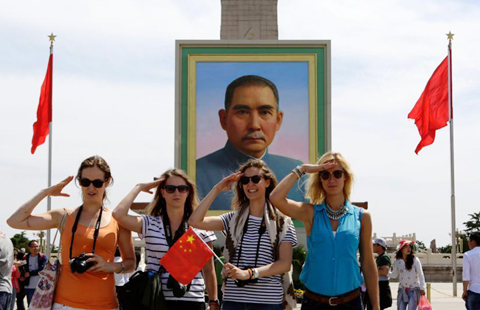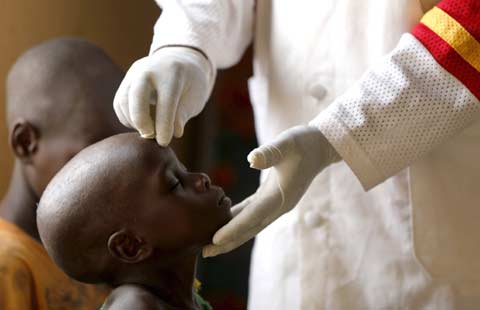Maker of myth
Updated: 2015-05-06 07:35
By Xing Yi(China Daily)
|
||||||||
Unlike traditional fairy tales that blur time and space, Hong's story contains many historical details and vividly depicts Chongqing by the Yangtze River.
But the realistic approach doesn't weaken the flavor of the fairy tale. In the story, Hong blends reality and magic, weaving the tale of a young boy, Sangsang, growing up in the 1970s, into the age-old mythical world of the Ba and life in the French navy barracks that was established in the 1900s, when the French colonized the city.
The main character is a way for Hong, who was born in 1962, to draw on her own childhood memories. "In a way, the boy is me," she says.
The theme for the latest story is empathy, in which Hong writes about how the kind-hearted but introverted Sangsang empathizes with an old lady who has lost her son. With the help and sacrifice of Liya, a witch of Ba, Sangsang helps the old lady deal with the grief of her son's death.
"The old lady is a real person from my childhood who lost two sons in a gang fight during the 'cultural revolution' (1966-76)," says Hong.
She says when she was a child, no one talked to the old lady and people were indifferent to her great loss. The old lady had many books in her home and read books to comfort herself.
But Hong felt close to the old lady and one day when Hong asked about the books, the old lady gave her one, which opened a door of literature for Hong.
"I think memory is very important. It contains the things that people deliberately conceal and forget," says Hong. "Literature can dig out the things that are buried deep in memory, and through it, I want to exemplify the good parts of humanity and pass them on so that a better world might rise."
Hong plans to write seven installments for the series, each one dedicated to one virtue of man, such as gratitude, forgiveness and sacrifice, in contrast to the "seven sins".
"Hong's works open a window for Chinese children to an ancient Chinese civilization and culture of Chinese witchcraft," says novelist Cui Manli. "It provides them an alternative to the popular Western fantasy with sorcerers on brooms such as Harry Potter and Lord of Rings, while it advocates for good merits and universal values."
"I think the book is ideal for families. Through shared reading, parents and children can explore the history together," says Wu Yan, an expert on children's literature at Beijing Normal University. "Hong has merged folk literature into the story very well."
Another key feature of the book is a set of illustrations. Cherry Denman, an accomplished British illustrator, provided the visual images for the book. Denman is married to a diplomat and splits her time between Beijing and London.
"In order to get the details right, Denman communicated with me a lot and asked me to do a lot of sketching," says Hong. "I also gave her a picture book of Journey to the West (Chinese classical mythical novel) for her reference in creating the apparel and appearance of the ancient Ba people."
Hong lived in the United Kingdom from 1991 to 2000. The book is printed in Chinese with an English translation in the back. The translation was done by Nicholas Smith, a British translator.
Mei Jia contributed to the story.

 Met Museum celebrates China with annual gala
Met Museum celebrates China with annual gala
 Ten photos you don't wanna miss - May 5
Ten photos you don't wanna miss - May 5
 Tree house hotel in Jinan
Tree house hotel in Jinan
 Six reasons stopping Apple Watch from ticking in China
Six reasons stopping Apple Watch from ticking in China
 Historical photos of 56 nations in China (Part I)
Historical photos of 56 nations in China (Part I)
 World No.1 Ma wins first men's singles world championship
World No.1 Ma wins first men's singles world championship
 Ten photos you don't wanna miss during May Day holiday
Ten photos you don't wanna miss during May Day holiday
 The world in photos: April 27 - May 3
The world in photos: April 27 - May 3
Most Viewed
Editor's Picks

|

|

|

|

|

|
Today's Top News
Xi will honor soldiers during Russia trip
China reforms can benefit
US: experts
Shanghai bans families of govt officials from owning firms
Chinese companies demonstrate presence at OTC
Most Americans believe US wealth distribution unfair: poll
Xi, Eric Chu
stress shared destiny
New leaders take reins at oil giants
China protests
US blacklisting in religious freedom
US Weekly

|

|






